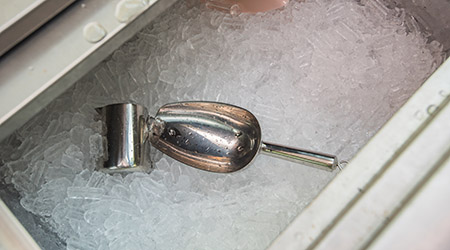Ensuring patient comfort is a top priority for hospitals and other healthcare facilities, and iced drinks and ice chips are common offerings to achieve this goal. But failed routine maintenance of ice machines in these facilities can cause the spread of bacteria such as Legionella. It is crucial that facility managers develop and implement water management and safety plans to prevent an outbreak. In this roundtable, Healthcare Facilities Today asked experts about the most effective steps for maintaining quality water and preventing the formation of Legionella in ice machines.
What steps can managers take to maintain quality water and prevent bacteria growth in ice machines?
The best approach is to maintain the systems in accordance with the manufacturer’s operating manual, which might include the following:
- Clean and sanitize ice machines, drinking fountains, and beverage dispensers every six months according to manufacturer instructions.
- Clean and sanitize equipment that has been repaired before placing it back in service.
- Maintain associated filters and water treatment devices connected to the machine in accordance with manufacture instructions.
- Perform testing of ice machines, drinking fountains, and beverage dispensers for validating an effective water management program prior to removal from service for cleaning and sanitization.
- Maintain testing and maintenance documentation.
As with any operational management activity, it is crucial for facility managers to develop and implement a water management and safety plan for their facilities as their operating guideline and establish an operating rhythm to adhere to that plan.
— Cem Candir, chief executive officer, Chemstar Water
To prevent the risk of bacteria in ice machines, the best solution is also to use filters and to regularly sample the produced ice. We also recommend the installation of a 0.2 µm filter after the ice machine has been cleaned and disinfected.
— Professor Philippe Hartemann on behalf of AquaTools

 Grounding Healthcare Spaces in Hospitality Principles
Grounding Healthcare Spaces in Hospitality Principles UC Davis Health Selects Rudolph and Sletten for Central Utility Plant Expansion
UC Davis Health Selects Rudolph and Sletten for Central Utility Plant Expansion Cape Cod Healthcare Opens Upper 2 Floors of Edwin Barbey Patient Care Pavilion
Cape Cod Healthcare Opens Upper 2 Floors of Edwin Barbey Patient Care Pavilion Building Sustainable Healthcare for an Aging Population
Building Sustainable Healthcare for an Aging Population Froedtert ThedaCare Announces Opening of ThedaCare Medical Center-Oshkosh
Froedtert ThedaCare Announces Opening of ThedaCare Medical Center-Oshkosh